The Kazakhs are Mongolia’s largest ethnic minority group representing 3-4% of Mongolia’s population (Mongolia’s entire population is just over 3.2 million people – 2020 Census). A majority of Mongolia’s Kazakhs make their home in western Mongolia in Bayan Ölgii Aimag (Province) with another group in Khovd Aimag and then smaller groups spread throughout the country including the capital Ulaanbaatar. A percentage of the Kazakhs of western Mongolia are herders and a percentage of those herders are known for their tradition of hunting with eagles although there are no definite statistics on the numbers of eagle hunters.
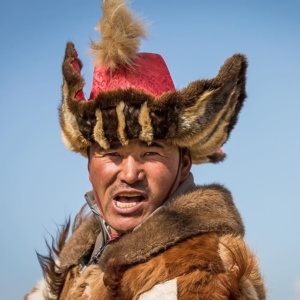
Falconry including hunting with eagles is not a recent sport created for tourism. There is evidence that falconry or hunting with birds of prey has taken place in the vast steppe and mountain landscapes of Central Asian countries for centuries. Falconry is a tradition that suits the vastness of the steppe and is a tradition that has been handed down from generation to generation. Although different birds of prey are used in different countries, Mongolia’s Kazakh’s use eagles which leads to the term ‘berkutchi’ – which specifically means hunting with golden eagles.
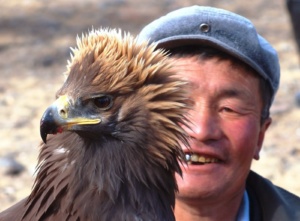
Experiencing the way of life of Mongolia’s Kazakh eagle hunters and how they hunt has become a major focus of the tourism industry in Mongolia – especially for those looking for an authentic experience. In 2011, UNESCO added Kazakh eagle hunting to the List of the Intangible Cultural Heritage of Humanity as an example of living human heritage. However, over the years, tourism to western Mongolia has increased and so has the impact that tourism has on the land, the culture and the way of life. Recently, in 2019, a well-respected international tour company announced it would no longer be sending its clients to the eagle festivals held yearly in Mongolia because the welfare of the eagles and their prey at the festivals do not adhere to the universally accepted ‘Five Freedoms’ of animal welfare. So that naturally got me thinking – what are the ethics of hunting with eagles in Mongolia?
Golden eagles are typically used for their agility and speed and because they have very acute eyesight for spotting prey in the vastness of the (often snow-covered) terrain. The landscapes of western Mongolia fit perfectly with the way golden eagles naturally hunt – either by soaring above the landscapes scanning the ground for prey or by perching on a rock and scanning the ground below for movement. Female golden eagles are preferred as they are stronger and more aggressive than their male counterparts. Golden eagles are predators with an extremely strong grip with sharp talons (it is the talons that kill the prey) and are adapted to winter hunting for hare, marmot and fox. It is said that golden eagles can kill a wolf although these are not natural prey for an eagle.
The eagles are captured in the wild using ‘jealousy traps’ – typically sub-adult eagles are captured between the ages of two and three. They are individually trained – it can take up to a year – but the end goal remains the releasing of them back into the wild to breed and raise young. The eagles are not held in captivity for the rest of their lives. Their wings are not clipped. And nor are these stunning birds caged. Yes, they wear a tomaga (hood) but spend time observing the relationship between a hunter and their eagle and you will see it is one of respect. To western eyes, the relationship may seem cruel but it is important to remember that these are not pets; they are working animals. The relationship can be compared with that of a farmer and working sheepdog. Spend time observing the relationship between a hunter and their eagle and you will see it is one of respect. It is understandable that western visitors are concerned about the welfare of the eagles. But for the Kazakh eagle hunters holding a golden eagle is a privilege and they have an incredibly close connection with their eagles, they are virtually family members, but it is sometimes hard for outsiders to recognise this. Evidence of this connection is when the eagles are released back into the wild usually the hunter will check to make sure they have a successful reintegration and have readapted to life in the wild.
Each hunter is different in how they capture and domesticate their eagle. Although the traditions and skills of hunting with eagles are passed down culturally, there is no set rule as to how it is done. Some of the hunters learn from their fathers or older brothers. Some learn from their sisters. Hunters can be male or female, young or old. Hunting with eagles can be done on foot or horseback. Some of the hunters own more than one eagle.
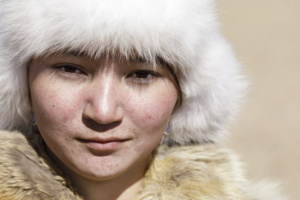

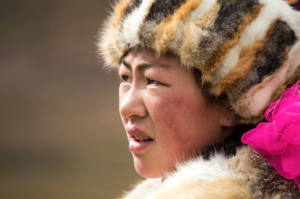
Eagle-hunting is only done during the winter months when the snow cover helps the birds spot fleeing prey (the hunters often take a younger family member with them to help flush out the prey) – it also when the prey such as corsac foxes have the thickest winter coats that are used to make warm clothing. Another reason why hunting takes place at all is that for a majority of the eagle hunters it is a tradition that is important to their cultural identity.
In the summer months, there is no hunting. The natural prey of the birds is carrying its young from late spring onwards which is why most hunting stops in late January or February. Also, eagles moult from around March to May and continue to moult throughout the summer usually finishing in September and October. The Kazakh eagle hunters do not hunt or train their eagles when they are actively moulting. During the summer months, the eagles are rested and there is typically not a lot of interaction between hunter and eagle during the summer. The eagles are tethered often near to a stream depending on the location of the families summer pasture and largely left to their own devices. The main focus of the hunters is that their eagles have a healthy moult and a healthy diet. If you are visiting in the summer months, do not ask to witness a hunt. It is not part of the Kazakh calendar and would be a contrived experience.
Hunting with their eagles is part of the identity of each hunter. Spend time with the hunters and you’ll see that hunting with their eagles is a practice that the hunters have had to learn – building a relationship of trust with their eagle. As you join them with their eagles you will start to understand that it is the communication between the hunter and eagle, which is key to a successful working relationship. However, not all hunts are successful. And as an observer, it might be that you miss the capture entirely. But never should you ask for a hunt to be staged. Do not accept contrived experiences where live prey is pre-captured, held and then released on purpose for you to be able to photograph or film the experience. If you do accompany a hunter with his or her eagle on a hunt then remember to leave your preconceptions behind – out in the wild landscapes of western Mongolia, schedules go out of the window, you’re on nomad time. It’s not just about the hunt, it’s about continuing a tradition, being in the deep silence of the winter landscapes and also experiencing skilled horsemanship and other aspects of the Kazakh culture. We as a company will never arrange any artificial experiences as they damage the culture, the way of life or wildlife itself. We ask you to do the same.
Throughout the year, festivals take place in western Mongolia. The larger more established events are a partnership between the Mongolian Eagle Hunter’s Association (or a similar organisation) and sponsorship by tour companies created initially in the late 1990s / the early 2000s as a way of bringing tourism to what was a remote and little-visited part of the country. Look at the events as similar to a summer community fete – just one where international visitors mix with eagle hunters, horsemen and members of the local community – children, mums, grandparents and the locals coming in from the provincial capital. Now, there is a range of festivals taking place – the more established events, more informal spontaneous events between the hunters within a local community and others taking place to mark a formal date in the yearly calendar such as Nauryz – the Central Asian New Year. The competitions between the hunters at the festivals showcase traditional falconry skills and demonstrate the communication between the hunter and eagle. As well as a panel of judges scoring the hunter (and of his or her eagle and horse) on appearance the main events are competitions testing the eagle’s willingness to fly to the hunters glove observing how fast and accurately the eagle responds. Another event is the judging of an eagle’s willingness to attack a dragged pelt. But, because the eagles are not flown when they are moulting in the summer and spend the summer resting it essentially means they have been inactive for half a year. The autumn festivals come not long after this natural rest period and often communication between the hunter and eagle is unpractised – it’s quite common for the eagles to simply ignore the hunters during the festival competitions to the amusement of the gathered local Kazakhs.
The festivals – especially those in the autumn – have been a huge success and not only have they helped to showcase the cultural traditions of Mongolia’s Kazakh eagle hunters but they have also raised the profile of eagle hunting in western Mongolia. But, as tourism to western Mongolia increases so there is a risk of the events or the hunters, their way of life and the eagles being turned into a commodity. Obviously, international visitors want to spend time with the hunters and the eagles but there is a risk of adult eagles being trapped or traded as props for the tourism industry – used to demonstrate a bit of falconry but with the goal of cashing in on the tourist trend. That’s why the largest festival organiser is working with the Wildlife Science and Conservation Centre of Mongolia on a programme looking at how to manage the increase in visitors responsibly and how to put in a community-managed system of accountability at the same time as protecting the conservation and sustainability of the wild eagle population and protecting the cultural identity of Mongolia’s Kazak eagle hunters.
In a region where the unpredictable climate can make the way of life volatile and uncertain, tourism can provide a stable additional income. Tourism can remain a positive force in western Mongolia and as a visitor, you can make sure your impact is a positive one – not a negative one leading to the dilution or altering of the traditions. Here are a few suggestions as to how you can do this:
- Accept that hunting with the eagles is a winter activity. It is a long-standing tradition with knowledge, skills and wisdom passed down through generations. If you’re visiting at another time of the year, do not ask for a hunting demonstration – especially one with captured prey. If you’re not comfortable with spending a length of time on horseback in sub-zero temperatures then accept you will not experience a hunt.
- As part of the experience, you should take an extended time to learn about the way of life of the Kazakh eagle hunters and their families. Yes, their way of life is tough and they don’t have access to modern conveniences such as flush toilets or hot showers that might make your visit more comfortable. However, this is how they live and by spending time with them you’ll connect with their individual stories – how long they have been eagle hunters, how many eagles they have owned, how eagle hunting makes them feel.
- Think about the group size you are travelling with. The eagles are wild-birds and may feel crowded especially with a high density of cameras snapping. Consider the wellbeing of the eagles.
- Think about how you travel to western Mongolia. How responsible is the guide or driver or tour company that arranges your experience? Do they know the hunters and their families personally? Can they teach you about the culture and the way of life? Are the hunters and their families financially rewarded in a respectful way (both the amount and how they are paid) for their time or for the accommodation and any horse treks they provide?
Having taken place for centuries, the capture, training and keeping and releasing of female golden eagles have been done in a way which does not threaten wild populations. The eagles are taken while young, well treated and then, crucially, they are released when they are still of breeding age. A close bond is formed between the hunter and eagle and most hunters believe that when they release their eagle into the wild, there remains a connection between them. By considering the ethics behind the hunting of eagles, you can help to manage the impact your visit has to western Mongolia.
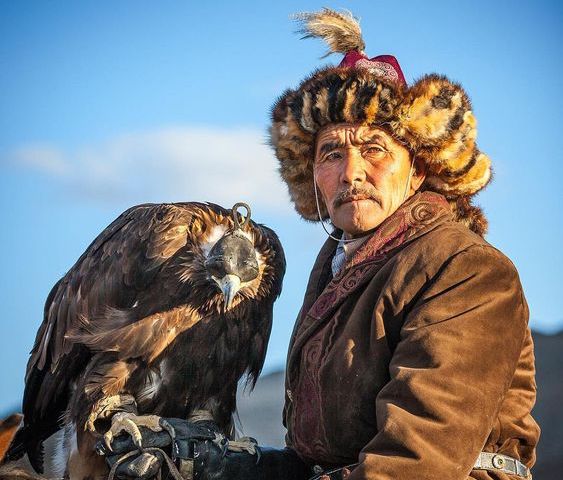
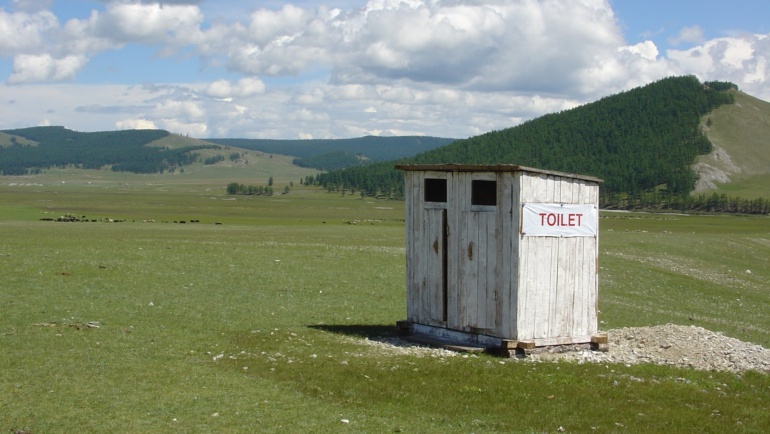
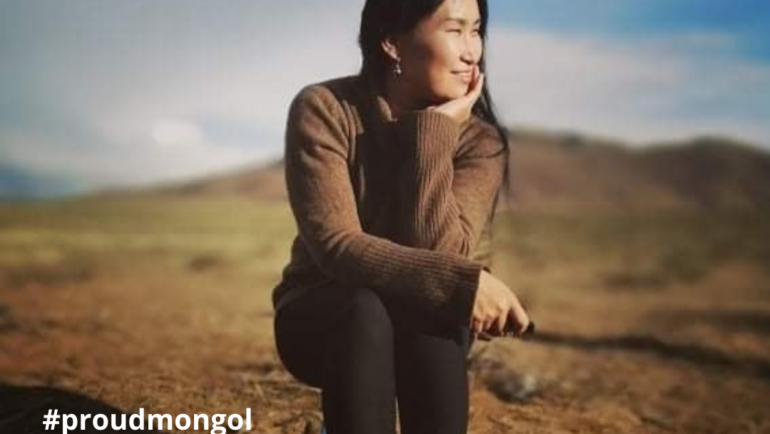
3 Comments
Meghan Fitz-James
This article is relatively well-researched. What would be great is if the writer also included what Dr. Lauren McGough -whose PhD thesis was on Kazakh eagle hunting culture in W. Mongolia- says about nest-taken baby eagles versus wild-trapped subadults in relation to the festivals, tourism, and the release custom. Please read/listen to https://t.co/GAE3ftGSDX & https://t.co/LWyPmK7vMs & read Dr. McGough’s PhD thesis Chapter 1 section called ” The Bigger Picture”. The studies by Battulga Sukhi, Takuya Soma, and Nolan R. Ebner are also must-reads in my opinion.
Meghan Fitz-James
Second comment: The E. D. of Bayan-Ölgii Tourism told me precaptured foxes are used in 90% of off-season demo hunts. I am researching the engagement of pre-Aisholpan females in Kazakh eagle hunting culture of which there are several whose bios I have uncovered intense info on. To learn more please check out my Instagram. There on my IG you will also see what an elder eagle hunter, Baytey, told me about his experience trying to compete at the eagle Festival.
Meghan Fitz-James
Third and final comment (you don’t have much room in these boxes!)The competition is intrinsically uneven when nest-taken eagles are pitted against wild-trapped unt-savvy subadult eagles because, as Dr. McGough and Baytey explain the latter are often crowd shy and relatively uninterested in chasing a lure and lose when pitted against young nest-taken hunting-inexperienced eagled that are good with crowds and interested in lure-chasing. Many real trad hunters eschew the Festivals citing animal welfare concerns for their eagles and locals often refer to the hunters whose main focus is on competing at the festivals as “showman” hunters. The studies show surprising statistics on actual number of active hunters versus promoted number. Also: I have learned also that wins at the Golden Eagle Festival are “often political” (again, that is intel from the E.D. of Bayan-Ölgii Tourism. Cheers, Meghan Fitz-James